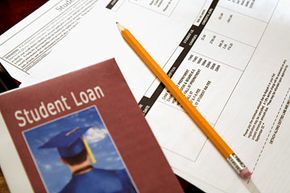Applying for student loans is a lot like applying for a home mortgage. In both cases, there is a lot of emotion involved in the process since getting the best deal can mean the difference between a bright future and years of struggle. And much like a home mortgage, applying for student loans can seem like a daunting task when you're just getting started. But with a little bit of planning and patience, your efforts should soon pay off.
Until recently, a college education was pretty much out of reach for most Americans. In 1940, only about 5 percent of the U.S. population had an education beyond high school. Now, about 70 percent of high school students enroll in college, though a much smaller number actually make it to graduation [source: National Center for Education Statistics]. This dramatic rise in college enrollment represents changing priorities among Americans, but it also has a lot to do with the widespread availability of student loans.
Advertisement
Student lending has been around for centuries, but didn't become commonplace until after World War II. In 1947, a report called the President's Commission on Higher Education proposed sweeping changes to the American system of higher education, including setting up a need-based borrowing system for lower- and middle-income students [source: Truman Library]. It also paved the way for the National Defense Education Act of 1958 and the Higher Education Act of 1965, which established the Perkins Loan and the Stafford Loan, respectively.
The U.S. Department of Education, the branch of government in charge of student loans, lends money to students enrolled in a wide range of educational institutions, including two- and four-year colleges, vocational schools, professional programs, residencies and internships [source: U.S. Department of Education]. Students can also borrow money to pay for coursework that leads to enrollment in an eligible program.
Students from middle- and higher-income families often do not apply for student loans because they assume they do not qualify. This is a mistake. Most students are eligible for some sort of student loan and these programs are almost always the best choice for funding an education. In the next section, we review the factors that determine your eligibility for student loans as well as a few things that can ruin your chances of borrowing.


